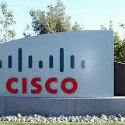Robbins Succeeds Chambers as Cisco Changes CEOs
Don't expect a lot of change, aside from Diet Coke consumption.

If all goes according to plan, today's the day Chuck Robbins takes over as CEO of Cisco, and John Chambers steps down after 20 years in the big chair.
Cisco announced the changing of the guard in early May, ending years of speculation after Chambers announced his upcoming retirement. Chambers isn't going very far -- he's continuing as executive chairman, an advisory role, leaving running the company to Robbins. Officially, the transition happened Sunday. (See Cisco's Robbins to Replace Chambers as CEO.)
Robbins takes charge of Cisco at a time of massive industry turmoil that threatens Cisco's future but also provides opportunities. The old way of building networks, on which Cisco built its empire, is changing.
The old way was based on vertical integration, with proprietary hardware and software controlled by a single vendor that also provides services. Network operators reconfigured networks manually, through a command line interface, a process requiring hands-on attention by large numbers of technicians traveling by planes, trains, automobiles, and trucks to where the equipment is.
The new way is based on disaggregated networks, with commodity white box hardware and open source software. Network operators can mix and match components from multiple vendors, reconfigure networks using GUIs or programmatically without human intervention at all. Most network configuration is done remotely, with little requirement for human intervention.
Cisco believes it can thrive in this new world, because of the opportunities it offers. Cisco predicts the Internet of Everything -- Cisco's name for the Internet of Things -- will be orders of magnitude larger than today's networked economy. Cisco plans to make the transition by selling business outcomes enabled by technology -- in other words, Cisco will tell its customers how they can grow their business using networked technology. Cisco plans to sell overall architectures of hardware, software, security and services, rather than individual products. (See How Cisco Will Compete Against White Box Switches.)
Cisco has articulated the strategy under Chambers' leadership, steadily refining the message. And Robbins has indicated this strategy will continue.
Indeed, don't expect a lot of big changes from Robbins in the short term. While we can't read his mind, he seems to share Chambers's vision. They have similar professional backgrounds; both men rose to CEO after heading Cisco's sales and operations. Chambers is the consummate salesman, and Robbins's role dealing with partners requires strong sales skills. Chambers says in his role as executive chairman, he'll be Robbins's "wingman." (See Cisco: Chambers to Be 'Wingman' to Robbins.)
In other words, this is not a catastrophic transition, as when a self-taught entrepreneur gets in over his head and turns the reins over to professional management, or when a board fires a flailing CEO and brings in new blood. This is a smooth transition, planned for several years. (See John Chambers IDs Potential Successors.)
That's not to say there will be no changes at all. Last week, Cisco sold its troubled set-top box business unit to France's Technicolor for €550 million (US$604 million). Cisco entered the STB market about ten years ago when it paid about $6.9 billion for Scientific Atlanta. (See Cisco Sells STB Unit to Technicolor for $604M.)
The Scientific Atlanta acquisition was Chambers's "biggest mistake," writes Julie Bort at Business Insider. Chambers had a vision that Cisco would succeed at consumer electronics and dominate consumer CPE, acquiring Scientific Atlanta, Linksys for WiF routers, and the Flip video camera. That didn't work out, and Cisco shut down the Flip business and sold Linksys to Belkin. (See Cisco Unloads Linksys Unit and Cisco Flips on Consumer Business.)
Cisco also said Friday it will shutter its storage business, following acquisition of Whiptail in 2013, according to a report on CRN. (See Cisco to Acquire Whiptail for $415M.)
Despite consolidating its business, Cisco will exit its fourth quarter with its headcount up, and future employee growth planned, Robbins said in a blog last week.
Want to know more about SDN? Visit Light Reading's SDN technology content channel.
What's on the agenda for Monday, the day of the transition? Monday morning, Robbins and Cisco's leadership team will host a company-wide "Ask Me Anything." In the afternoon, the company is hosting a celebration at Levi's Stadium in Silicon Valley, near Cisco's headquarters, to commemorate Chambers's leadership, according to a company spokesman. Robbins will meet via telepresence in Poland and Portugal, as well as meeting with Cisco's distinguished engineers and fellows.
On a personal note, Robbins does not plan to move into Chambers's office, the company says. Robbins doesn't get more real estate to go with the new responsibility because all Cisco offices are the same size.
Also, Diet Coke addicts who work at Cisco won't have as much competition for their fix; Robbins doesn't drink as much of the stuff as Chambers does.
— Mitch Wagner, 


 , West Coast Bureau Chief, Light Reading. Got a tip about SDN or NFV? Send it to [email protected].
, West Coast Bureau Chief, Light Reading. Got a tip about SDN or NFV? Send it to [email protected].
About the Author(s)
You May Also Like




_International_Software_Products.jpeg?width=300&auto=webp&quality=80&disable=upscale)







